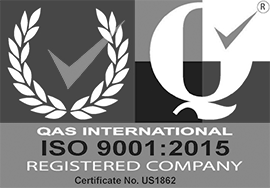Secondary Operations
Processes to Fully Finish Components
In-House Finishing Capabilities
In many cases, aluminum and zinc die cast components require secondary operations. Soldy has all the necessary equipment and expertise to deliver a completely finished product. Our secondary processes are described below.
Trim Presses
Die casting trim dies are used to cut or shear excess aluminum or zinc (runner, overflows and flash) from the cast part. The two-piece trim die is secured in a trim press that forces the two halves of the trim die together under several tons of pressure. Trim dies, which require great attention to detail in design, are produced in-house by our experienced die makers.
CNC Machining
CNC (Computer Numerical Control) machining is used to create component features and shapes when we cannot die cast to net shape (part-to-blueprint). Our CNC capabilities include a 4-axis CNC machine, which operates on the X, Y and Z axes, and also through rotation around the X-axis (referred to as the A-axis). Our CNC machines are used not only for shaping, but also for fast and efficient drilling and tapping.

Vibro Deburring
Our vibratory finishing process involves the placing of parts, media (usually steel) and compounds into a vibratory bowls or batch tubs. The vibration exerts force on the parts that causes the media and parts to turn and grind against each other. Vibratory finishing is used for deburring, polishing, cleaning, descaling and surface preparation. Vibro deburring is a highly automated process, one that reduces labor and is able to achieve the best results for parts with close tolerances.
Shot Blast Wheelabrator
Shot blasting creates an even, textured surface on the casting, and can help with the removal of excess flash and burrs that may remain after the trim press operation. Shot blasting is an important intermediate step for the surface preparation of an aluminum casting before its surface is painted or coated.
Aluminum Heat Treating Services
Our aluminum heat treat oven is used to anneal, or age, components to change the microstructure of the metal. This has the desired effect of changing its mechanical or electrical properties to make the finished product better suited for its intended purpose. For example, annealing in our aluminum heat treat furnace may serve to increase the ductility or reduce the hardness of a casting. It may also reduce or eliminate any internal stresses to enhance the durability of castings. This makes this process extremely valuable for companies in sectors ranging from automotive to consumer electronics to medical devices.
Anodizing Cast Aluminum
Anodizing can be a challenge without the right level of experience. As a leader in aluminum and zinc die casting, Soldy Manufacturing has the expertise to provide these services, as well as related finishing techniques such as zinc yellow chromate plating and black zinc chromate finishes. Our combination of know-how and state-of-the-art equipment means you can expect to receive the highest-quality results from us, whether you’re looking for anodized aluminum or zinc yellow chromate components.
Our engineers are happy to help you get started or answer any questions you have regarding our secondary operations.


